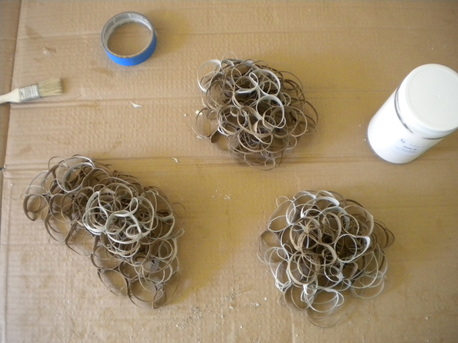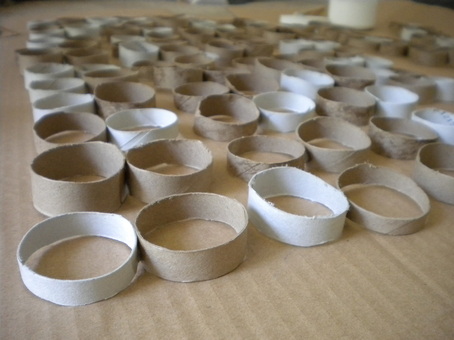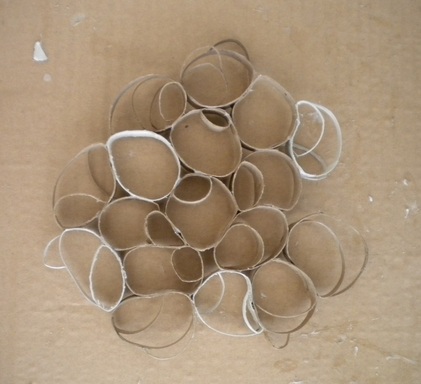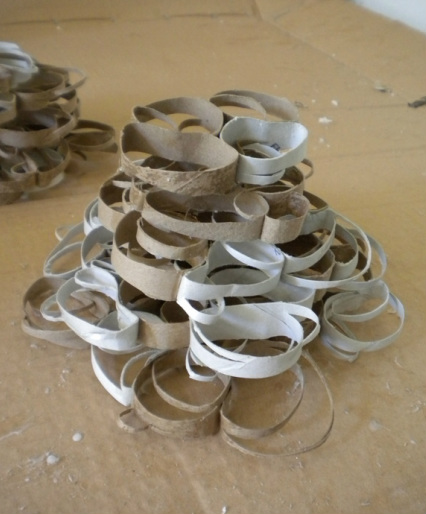I have been researching different species of coral and studying the various forms and textures. The extensive variations makes choosing a single form difficult. From the round and playful Bubble coral, to the grooved, rough Brain coral, to a slick flat Mushroom-like species, I have been challenged in choosing a place to begin. Instead, I'll be creating a reef that is composed of a few different types of coral - probably more of a hybrid than an exact replica of a species. I have to consider which will be most interesting to create given the limitations of the materials, and that requires some experimenting.
First, I cut the tubes into thin slices, about 1/8" thick, using a blade. Then, with the reversible adhesive I ordered for this project, I glue the slices together. Unlike quick-drying hot glue, this adhesive takes a while to set. I have to tape the pieces together until they are dry, making this process much slower. The result is something similar to the honeycomb structure from the straw sculpture. Although beginning with a form like the maquette seems like a logical place to start, it is not where I want to end this process.
I continue to pull, glue, and tape the tubes, creating more irregular shapes. Then, I cut into the structure, making little slivers of cardboard that can be bent and woven throughout the main form to create an intricate inner circuitry. Once again, glue, tape, and wait. Using approximately 10 or 15 of my rolls, I create different sizes that are then stacked on top one another with the largest on the bottom. After becoming more familiar with reef species, I have a vision for this particular structure as expainding as it rises from the ground; however, in order to assemble it like I am thinking, it must be glued upside down. Why fight gravity when it can be used to your advantage?




 RSS Feed
RSS Feed
